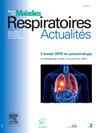Épidémiologie et facteurs de risques professionnels et environnementaux du cancer bronchopulmonaire
Q4 Medicine
引用次数: 0
Abstract
In France, lung cancer is the 3rd most common cancer (52,777 new cases in 2023) and the 1st cause of cancer-related death (30,896 cases in 2022). While incidence and mortality rates in men have stabilized, they are demonstrating an alarming growth in women, linked to the increase in female tobacco consumption. Combined, close to 90 % of lung cancer cases are attributable to modifiable factors, offering numerous levers for prevention policies. While tobacco smoking is indeed the main risk factor for lung cancer (attributable fraction: higher than 80 %), the risk factors and exposures are numerous, such as a diet low in fruit (10%), occupational exposures (16%), and environmental exposures, such as radon (10%) and outdoor air pollution (3.6 %). In 2025, the International Agency for Research on Cancer identified 31 definite carcinogenic agents and carcinogenic exposure situations from occupational or environmental sources, for which there is sufficient evidence of an excess of lung cancer in humans. In the clinical management of patients, it is important to identify any occupational exposure to carcinogenic agents. Recognition of lung cancer as an occupational disease is a major medical and social issue for patients. Several approaches can be used to identify exposure to occupational carcinogens: occupational interview (with specific questionnaires or self-questionnaires), biometrological analysis for certain agents, or imaging (for asbestos and crystalline silica). Once an occupational exposure has been identified, the clinician may or may not advise the patient to file an occupational disease claim.
支气管肺癌的流行病学、职业和环境风险因素
在法国,肺癌是第三大最常见的癌症(2023年新发病例52,777例)和癌症相关死亡的第一大原因(2022年30,896例)。虽然男性的发病率和死亡率已趋于稳定,但由于女性烟草消费的增加,女性的发病率和死亡率却出现了惊人的增长。综合起来,近90%的肺癌病例可归因于可改变的因素,为预防政策提供了许多杠杆。虽然吸烟确实是肺癌的主要危险因素(可归因比例:高于80%),但危险因素和暴露有很多,例如低水果饮食(10%)、职业暴露(16%)和环境暴露,如氡(10%)和室外空气污染(3.6%)。2025年,国际癌症研究机构确定了31种明确的致癌物,以及来自职业或环境来源的致癌暴露情况,有充分证据表明人类中存在过量的肺癌。在患者的临床管理中,重要的是要确定任何职业接触致癌物。承认肺癌是一种职业病是患者面临的一个重大医疗和社会问题。有几种方法可用于确定职业性致癌物的暴露:职业访谈(使用特定的问卷或自我问卷),对某些物质进行生物计量学分析,或成像(针对石棉和结晶二氧化硅)。一旦确定了职业暴露,临床医生可能会或可能不会建议患者提交职业病索赔。
本文章由计算机程序翻译,如有差异,请以英文原文为准。
求助全文
约1分钟内获得全文
求助全文
来源期刊

Revue des Maladies Respiratoires Actualites
Medicine-Pulmonary and Respiratory Medicine
CiteScore
0.10
自引率
0.00%
发文量
671
 求助内容:
求助内容: 应助结果提醒方式:
应助结果提醒方式:


